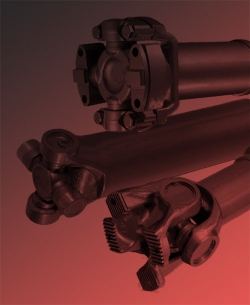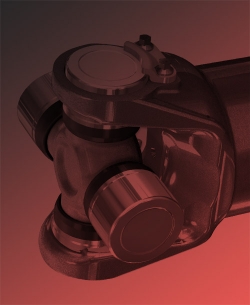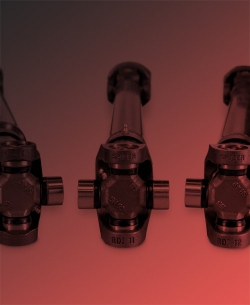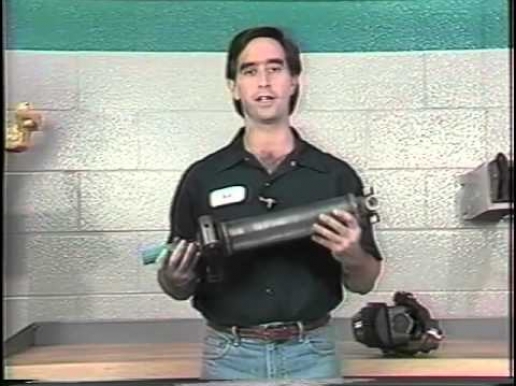Measure the angles of each component in your drivetrain—driving member, driveshaft(s), driven member—to find your u-joint operating angles.
A universal joint operating angle is the angle that occurs between the driving member and driveshaft, and between the driven member and driveshaft when they are not vertically aligned.
NOTE: This calculator does not address compound drive angles (horizontal offsets).
You’ll need a spirit level or digital protractor accurate to ¼ degree. You’ll be measuring angles at various points:
- From the transmission
- Along the drivelines
- Back to the rear axles
Enter the angle to the nearest ¼ degree, along with the slope (up or down):
- Up: Rises from front to rear of vehicle
- Down: Descends from front to rear
Three ways to measure:
- Use an adapter for a digital protractor that allows for measurement of slopes directly off bearing caps in light duty or quick disconnect applications
- Remove bearing cap and take measurement directly off yoke
- Remove snap ring and take measurement off bearing cap using adapter
Measurement tips:
- Measure along actual center line of output shaft
- Measure on flat surface 90 degrees to or parallel to output shaft of transmission
- Measure true center line
Basic rules:
- Universal joint operating angles at each end of a driveshaft should always be at least one-half degree
- Universal joint operating angles on each end of a driveshaft should always be equal within one degree of each other (one half degree for motor homes and shafts in front of transfer cases or auxiliary devices)
- For vibration-free performance, universal joint operating angles should not be larger than three degrees. If they are, make sure they do not exceed the maximum recommended angles.
| Driveshaft RPM | Max. Operating Angle | Interaxle | |
|---|---|---|---|
| Parallel | Intersecting | ||
| 5000 | 3.2° | — | — |
| 4500 | 3.7° | — | — |
| 4000 | 4.2° | — | — |
| 3500 | 5.0° | — | — |
| 3000 | 5.8° | — | — |
| 2500 | 7.0° | — | — |
| 2000 | 8.7° | — | — |
| 1500 | 11.5° | — | — |
Points to remember:
- The angles shown on the above chart are the maximum u-joint operating angles recommended by Spicer engineers and are directly related to the speed of the driveshaft.
- Any universal joint operating angle greater than 3 degrees will lower universal joint life and may cause a vibration.
- Remember to check maximum safe driveshaft RPM by using the Critical Speed RPM Calculator.
Find a Spicer parts distributor today, or find where you can place your order now on Dana’s streamlined eCommerce platform, DanaAftermarket.com.




